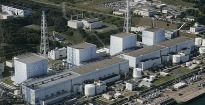Report: Radiation Levels Drop
A small crew of technicians braved radiation and fire through the day on Tuesday as they fought to prevent three nuclear reactors in northeastern Japan from melting down and stop storage ponds loaded with spent uranium fuel pods from bursting into flames.
Tokyo Electric Power Company officials announced on Tuesday evening that they were preparing to use helicopters in an attempt to douse with cold water a boiling rooftop storage pond for spent uranium fuel rods. The rods are still radioactive and potentially as hot and dangerous as the fuel rods inside the reactors if not kept submerged in water.
With hydrogen gas bubbling up from chemical reactions set off by the hot fuel rods, the storage pond produced a fire and powerful explosion on Tuesday morning that blew a 26-foot-wide hole in the side of Reactor 4 at the Fukushima Daiichi nuclear power plant.
Reactors 4, 5 and 6 at the plant, 140 miles northeast of Tokyo, were not operating on Friday afternoon when an offshore earthquake with a magnitude now estimated at 9.0 suddenly shook the site. A tsunami with waves up to 30 feet high rolled into the northeast Japanese coastline minutes later, swamping the plant.
At least 750 workers evacuated on Tuesday morning after a separate explosion ruptured the inner containment building at reactor No. 2 at the Daiichi plant, which was crippled by Friday’s earthquake and tsunami. The explosion released a surge of radiation 800 times more intense than the recommended hourly exposure limit in Japan.
But 50 workers stayed behind, a crew no larger than would be stationed at the plant on a quiet spring day. Taking shelter when possible in the reactor’s control room, which is heavily shielded from radiation, they struggled through the morning and afternoon to keep hundreds of gallons of seawater a minute flowing through temporary fire pumps into the three stricken reactors, where overheated fuel rods continued to boil away the water at a brisk pace.
By early afternoon radiation levels had plunged, according to the International Atomic Energy Agency in Vienna. Workers have released surges of radiation each time they bleed radioactive steam from the troubled reactors in an attempt to manage the pressure inside the reactors, but the reactors are not yet releasing high levels of radiation on a sustained basis, Japanese officials said.
Click here to read more.


